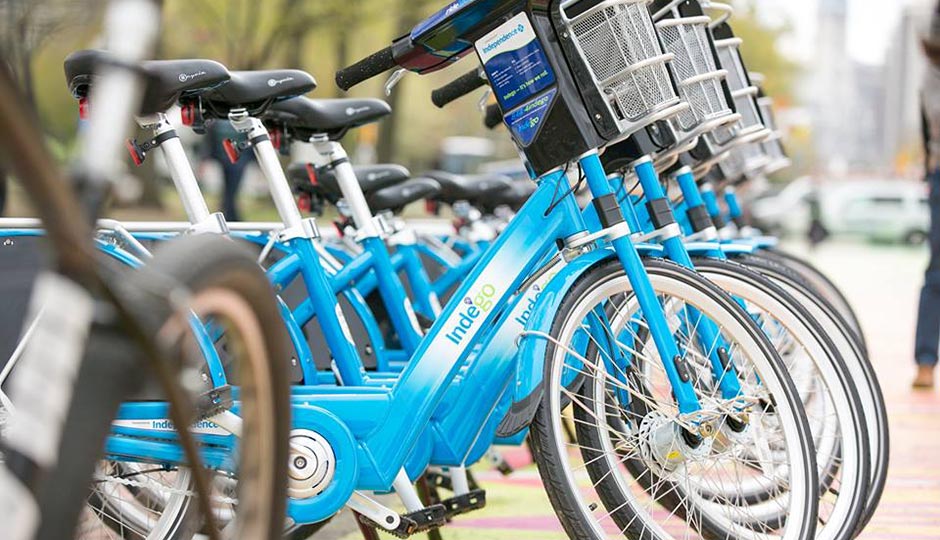This Infographic Shows How Wildly Successful Philly’s Indego Bike Share Is

Photo | Indego Facebook
The news about Philly’s bike share system has been almost exclusively good since it launched in April (almost). Indego reached 8,000 rides in its first week, then 65,000 rides in its first five weeks, and then 100,000 rides in its first two months, surpassing bike share systems in cities such as Boston, Denver and Washington, D.C.
Now, there’s even more reason to cheer.
Randal Olson, a postdoctoral researcher at the University of Pennsylvania, examined how often the city’s bike stations are empty, full or neither in order to determine the health of the system. That’s an important metric because you want the stations to have plenty of bikes for people to use, but also plenty empty spaces for them to unload bikes that they’re done using. He found that most of the stations are neither empty nor full — a/k/a/ fully healthy — at least 90 percent of the time. Check it out:
At the same time, though, there are a number of bike stations that are empty more than 20 percent of the time, such as the ones at 8th and Market streets, 36th and Sansom streets, and the Children’s Hospital of Philadelphia. This is actually good news, too, because it means that there is room for the city’s bike share system to grow. Indego is currently scheduled to expand next spring.
Olson’s research also yielded a good lesson for cyclists who roll up to empty or full stations: “If you see an empty or full Indego bike station, you’re better off finding another station than waiting 5 minutes,” he said. “In fact, in the past couple months you typically had to wait about 30 minutes at a station before it was no longer full or empty.”
Follow @HollyOtterbein on Twitter.


